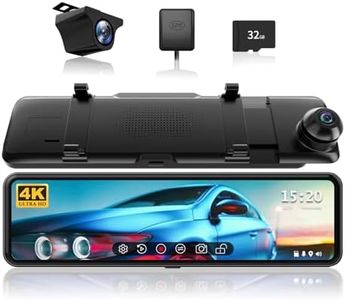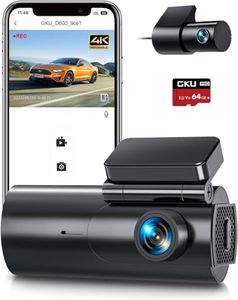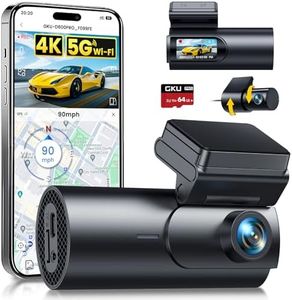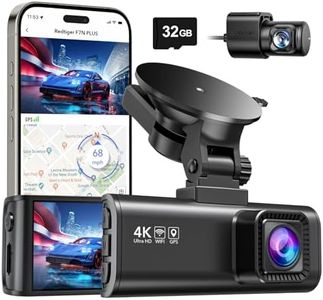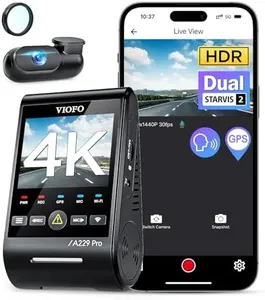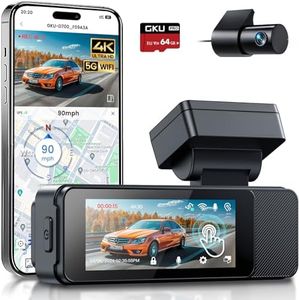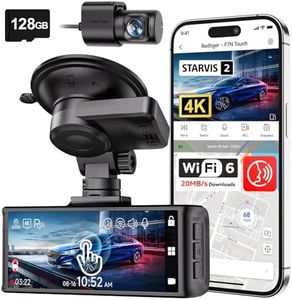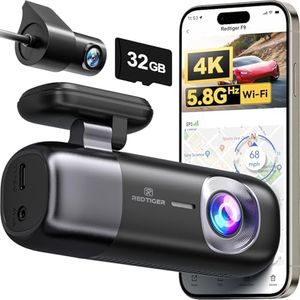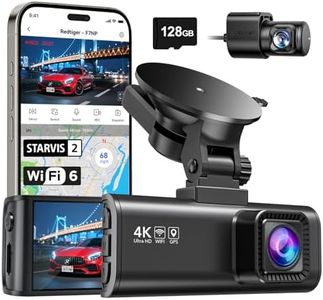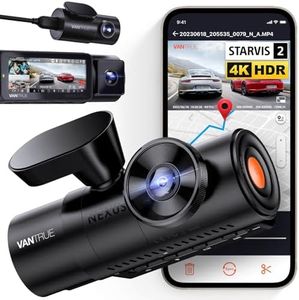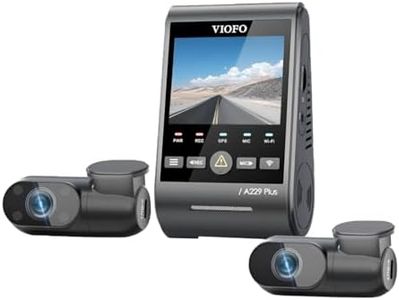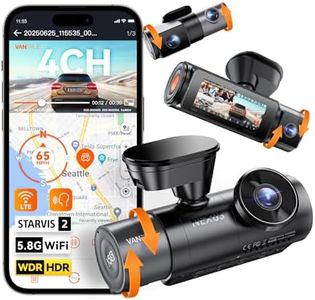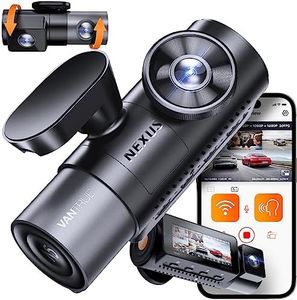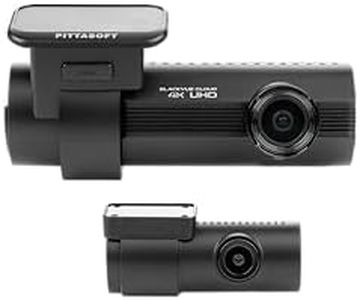We Use CookiesWe use cookies to enhance the security, performance,
functionality and for analytical and promotional activities. By continuing to browse this site you
are agreeing to our privacy policy
10 Best Car Security Cameras
From leading brands and best sellers available on the web.Buying Guide for the Best Car Security Cameras
When shopping for a car security camera, it's important to focus on how well the device can record crucial moments, withstand regular use, and meet your personal security needs. Buyers should think about where and how they drive, whether they need footage inside or around the vehicle, and how easy it is to use the camera daily. To make the best choice, it's helpful to understand the main features so you can match them to your driving habits and the level of protection you want.Video ResolutionVideo resolution describes how clear and detailed the camera's recorded images and videos will be. The higher the resolution, the clearer the footage, which can be important for capturing license plates and identifying faces. Resolutions are usually divided into Standard Definition (SD), High Definition (HD), and Full HD or higher (like 1080p, 2K, 4K). If you drive mainly in well-lit areas or just want basic coverage, HD may be enough. But if you need to pick out details in your footage, such as in case of accidents or vandalism, a higher resolution is better.
Field of ViewThe field of view shows how wide an area the camera can capture at once. A wider angle lets you see more of what's happening around your car, but it can sometimes make the video edges look a bit stretched. Field of view is usually grouped into narrow (below 110 degrees), standard (110–140 degrees), and wide (above 140 degrees). For most city drivers, a standard view covers the road ahead well, but if you park on open streets or want to record side impacts, a wide field of view may work best.
Night VisionNight vision refers to the camera’s ability to record clear video in low light or at night. Some cameras use infrared LEDs or special sensors to improve nighttime clarity. The quality of night vision can range from basic (grainy, limited distance) to advanced (brighter, more detailed across a larger area). If you frequently drive or park at night, look for cameras praised for superior night vision so footage is useful even in darkness.
Loop Recording and Storage TypeLoop recording means the camera keeps recording by overwriting the oldest footage when the storage fills up, so you don’t have to worry about running out of space. Storage type refers to how the footage is saved, such as memory cards or cloud backup. Some recordings need large, high-quality cards; others can save to the cloud for remote access. If you want your footage saved for longer, check for larger card support or cloud options, but for most daily use, standard loop recording with a decent memory card is enough.
Parking ModeParking mode allows the camera to keep watch over your car even when the engine is off. It can detect motion or impacts and start recording automatically, helping you catch hit-and-runs or vandalism when parked. Types of parking mode include basic (records short clips when triggered) and advanced (continuous low-power surveillance). If your car is often parked in public or unattended spaces, a strong parking mode is crucial, while those mostly parking in garages may need it less.
Installation and Power OptionsHow the camera is installed and powered affects convenience and reliability. Some cameras plug into the car’s lighter socket, while others can be hardwired for a cleaner look and steady power. There are also battery-powered cameras that may be easier to install temporarily. If you prefer a set-it-and-forget-it system, hardwiring is more seamless, while casual users or renters might go for plug-in or battery models.
Audio RecordingAudio recording lets the camera capture sounds inside or near your vehicle, which can be helpful during disagreements or traffic stops. Some cameras allow you to turn this feature on or off to suit privacy laws or preferences. If you want comprehensive documentation, look for models with good audio recording, but if you prefer privacy, choose one with a simple mute option.
